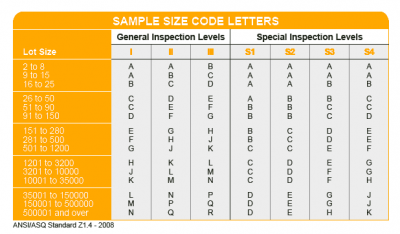Streamlining the Supply Chain: Key Strategies for Success in the Garment Industry

In today’s fast-paced global economy, the garment industry faces constant pressure to deliver high-quality products efficiently and cost-effectively. As consumer demands evolve, companies in the garment industry must optimize their supply chains to remain competitive. A streamlined supply chain not only ensures quicker turnaround times but also reduces costs, minimizes risks, and maintains high product quality.
In this blog, we will explore key strategies for streamlining the supply chain in the garment industry, with a special focus on third-party inspection services, effective communication, technology integration, and sustainability—all while ensuring compliance with international standards like ISO 2859.
The Importance of Supply Chain Optimization in the Garment Industry
The garment industry is highly competitive, with global production networks that span multiple countries. A well-optimized supply chain is critical for companies to:
- Reduce lead times and meet market demand.
- Minimize costs by reducing wastage and inefficiencies.
- Ensure quality control across all stages of production.
- Improve supplier relationships and communication.
- Enhance customer satisfaction by consistently delivering quality products.
Given the complexity of garment manufacturing, which involves sourcing raw materials, production, quality control, and distribution, streamlining the supply chain can make a huge difference in business success.
1. Enhancing Supplier Communication and Collaboration
One of the first steps toward streamlining the supply chain is fostering effective communication and collaboration with suppliers. Garment production often involves multiple vendors for sourcing fabric, accessories, and other raw materials. Miscommunication or delays at any stage can disrupt the entire production process.
Tips for improving supplier collaboration:
- Use technology platforms such as cloud-based supply chain management (SCM) software to provide real-time updates on orders, shipments, and inventory levels.
- Establish clear contracts with suppliers, defining expectations, lead times, and penalties for non-compliance.
- Implement regular audits and inspections to ensure suppliers meet quality standards. Third-party inspection companies can be instrumental in providing unbiased evaluations.
- Foster long-term relationships with key suppliers to ensure consistent quality and timely deliveries.
Proactive communication not only streamlines the process but also builds trust and accountability, reducing the likelihood of production delays.
Read more: All About Soft Goods Quality Control in Supply Chain
2. Utilizing Third-Party Inspection Services
Ensuring product quality is critical in the garment industry, where defects can result in costly recalls, waste, and damaged reputations. Third-party inspection services play a pivotal role in maintaining quality throughout the supply chain, offering an independent and unbiased evaluation of products at different stages of production.
Benefits of third-party inspections:
- Objective Quality Assessment: Third-party inspectors provide an impartial review of goods during garment inspection, ensuring they meet specified standards before moving to the next stage of production or shipment.
- Cost Efficiency: By identifying defects early in the production process, third-party inspections help companies avoid the costs associated with product recalls or rework.
- Compliance with Standards: Inspections ensure compliance with international standards such as ISO 2859 (Sampling Procedures for Inspection by Attributes), which helps businesses avoid costly legal issues and penalties.
- Risk Reduction: Detecting quality issues early mitigates the risk of defective products reaching the market, thereby protecting brand reputation and customer satisfaction.
For the garment industry, third-party inspection companies can conduct various types of inspections, including initial production check, inline, and final inspections. Pre-shipment inspections are also crucial to ensure that finished products meet the buyer's quality requirements before they leave the factory.
Read more: 13 Essential Garment Inspection Checklist in Quality Control
3. Adopting Technology for Supply Chain Transparency
Technology has revolutionized supply chain management across industries, including the garment sector. The use of technology not only improves visibility but also enables real-time decision-making and risk mitigation.
Key technologies for optimizing the garment supply chain:
- Supply Chain Management (SCM) Software: SCM platforms provide end-to-end visibility into the supply chain, allowing companies to track orders, manage inventory, and coordinate with suppliers. Real-time data helps in identifying potential bottlenecks early and taking corrective action.
- Blockchain for Transparency: Blockchain technology offers a decentralized and tamper-proof way to track products through the supply chain, ensuring transparency and traceability. This is especially useful for garment companies looking to provide proof of ethical sourcing and fair labor practices.
- Artificial Intelligence (AI) and Machine Learning (ML): AI and ML can be used to predict demand, optimize production schedules, and identify potential supply chain risks before they become problems. AI-driven analytics can also help optimize inventory levels, reducing excess stock or shortages.
- Internet of Things (IoT): IoT devices can be used to monitor the condition of goods during transit, ensuring that sensitive materials like fabrics are not damaged by humidity or temperature fluctuations. This real-time monitoring helps maintain product quality.
Adopting these technologies helps garment manufacturers streamline operations, improve accuracy, and meet tight deadlines, ultimately leading to a more efficient supply chain.
4. Streamlining Inventory Management
Efficient inventory management is essential for reducing costs and minimizing wastage in the garment industry. Overstocking can lead to excess inventory that may become obsolete, while understocking can cause production delays or missed sales opportunities.
Strategies for better inventory management:
- Implement Just-in-Time (JIT) Inventory: JIT inventory systems ensure that materials are ordered only when needed, reducing excess inventory and storage costs. However, this requires close coordination with suppliers to ensure timely deliveries.
- Use demand forecasting tools to predict market trends and plan inventory levels accordingly. AI-driven demand forecasting can be particularly useful in the fashion industry, where trends change rapidly.
- Categorize inventory based on demand and value. For example, high-demand items should be prioritized for quicker restocking, while low-demand items can be ordered in smaller quantities.
Effective inventory management ensures that garment manufacturers have the right materials at the right time, reducing lead times and improving overall efficiency.
5. Focus on Sustainability
Sustainability is becoming increasingly important in the garment industry, as consumers and regulators demand more eco-friendly practices. A sustainable supply chain not only reduces environmental impact but can also improve brand reputation and customer loyalty.
Sustainability strategies for garment supply chains:
- Sourcing eco-friendly materials: Work with suppliers that provide organic or recycled fabrics, reducing the environmental footprint of garment production.
- Implement energy-efficient practices: Encourage suppliers to adopt energy-saving technologies in their production processes, such as using renewable energy sources or optimizing resource use.
- Minimize waste: Collaborate with suppliers and manufacturers to reduce waste during production. For example, fabric waste can be repurposed or recycled.
- Use sustainable packaging: Opt for recyclable or biodegradable packaging materials to further reduce environmental impact.
By integrating sustainability into the supply chain, companies can appeal to environmentally conscious consumers while contributing to a healthier planet.
Read more: 7 Difference between SLCP and Higg FSLM
6. Ensuring Compliance with Industry Standards
Compliance with international standards and regulations is crucial for garment manufacturers that operate globally. Failure to comply can result in legal penalties, product recalls, or loss of market access. In particular, ISO standards play a significant role in maintaining quality, safety, and efficiency across the supply chain.
Key ISO standards for the garment industry:
- ISO 9001 (Quality Management Systems): Ensures consistent product quality and continuous improvement across all processes.
- ISO 14001 (Environmental Management Systems): Encourages the adoption of sustainable practices that minimize environmental impact.
- ISO 2859 (Sampling Procedures for Inspection by Attributes): Provides guidelines for statistically sound sampling methods during quality inspections, reducing the need for full batch inspections while maintaining high product standards.
Partnering with a third-party inspection company can help ensure that your supply chain remains compliant with these and other relevant standards, reducing the risk of penalties and improving overall operational efficiency.
7. Managing Risks and Contingencies
The global nature of garment manufacturing makes supply chains vulnerable to disruptions, such as shipping delays, natural disasters, or supplier issues. To ensure smooth operations, companies must proactively identify and manage risks.
Risk management strategies for the garment supply chain:
- Diversify suppliers: Relying on a single supplier increases the risk of disruption if that supplier faces issues. Work with multiple vendors across different regions to spread risk.
- Develop contingency plans: Have backup plans in place for critical supply chain functions, such as alternative suppliers or transportation routes.
- Monitor geopolitical risks: Stay informed about potential political or economic disruptions in the regions where your suppliers operate, and adjust your strategy accordingly.
- Leverage data analytics: Use data to predict potential risks and bottlenecks in the supply chain, allowing for proactive decision-making.
By adopting a proactive risk management approach, garment manufacturers can maintain operational continuity and avoid costly disruptions.
Read more: Resilience in Supply Chain Management: A Key to Navigating Uncertainty
Conclusion
Streamlining the supply chain in the garment industry is essential for staying competitive in today’s dynamic market. By enhancing supplier communication, leveraging third-party inspection services, integrating technology, optimizing inventory, focusing on sustainability, ensuring compliance, and managing risks, companies can achieve greater efficiency, reduce costs, and improve product quality.
Third-party inspection companies like Testcoo play a vital role in this process by ensuring that products meet quality standards and helping businesses comply with international regulations such as ISO 2859. Ultimately, a well-optimized supply chain leads to better outcomes for both manufacturers and consumers, contributing to long-term success in the garment industry.
Need help optimizing your supply chain? Contact us today to learn how our third-party inspection services can support your garment business!
Related Articles
Read MoreFree Sample Report Performance Quality Control
Download a sample report to keep control of your supply chain!
Featured Articles
 AQL Table | How to Read It
AQL Table | How to Read It TOP 10 Common Defects in Garments Quality Inspection
TOP 10 Common Defects in Garments Quality Inspection Product Packaging and Shipment Label requirements for Amazon FBA
Product Packaging and Shipment Label requirements for Amazon FBA What Is ASTM-F2413-18? Protective Footwear Standard
What Is ASTM-F2413-18? Protective Footwear Standard How to Conduct Third-Party Quality Control Inspections for Electric Scooters
How to Conduct Third-Party Quality Control Inspections for Electric Scooters SMETA Audit-What is SMETA Audit?
SMETA Audit-What is SMETA Audit? TESTCOO Supplier Verification/Certification Service SLCP, Higg FEM, GRS, GOTS
TESTCOO Supplier Verification/Certification Service SLCP, Higg FEM, GRS, GOTS Quality Control Inspection Company in China
Quality Control Inspection Company in China What is Quality Inspection? A Complete Guide
What is Quality Inspection? A Complete Guide Guidelines for Product Inspection in India
Guidelines for Product Inspection in India
Category
- Production Inspection Service
- Factory Audit
- Softline Inspection
- Hardline Inspection
- Electrics Inspection
- Certification
- Checklist
- Manufacturers
- Quality Assurance Basics
- Products Recall
- AQL
- Guidence and Standard
- News
- Supplier Management
- Amazon
- Protective Equipment
- e-commerce quality control
- Indian Manufacturing
- Soft Goods Quality Control
- Supply Chain Management
- Supply Chain Resilience
- E-Commerce Quality Control
- ISO 2859
- Supply Chain Optimization
- Garment Industry
- Higg Index




